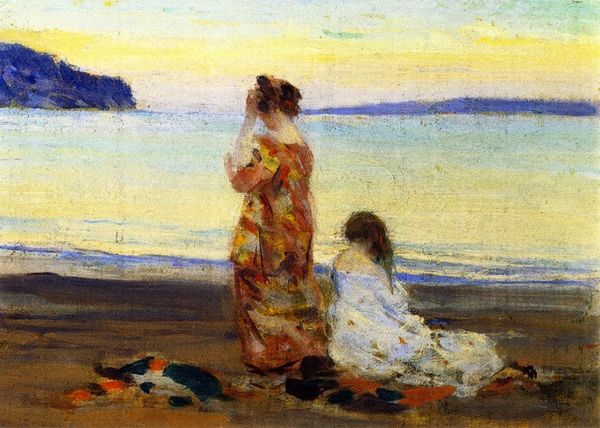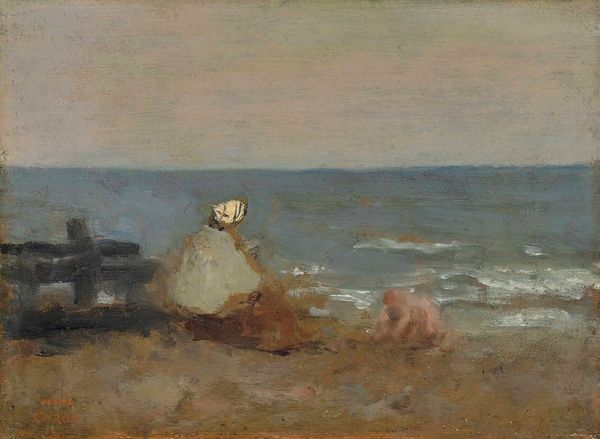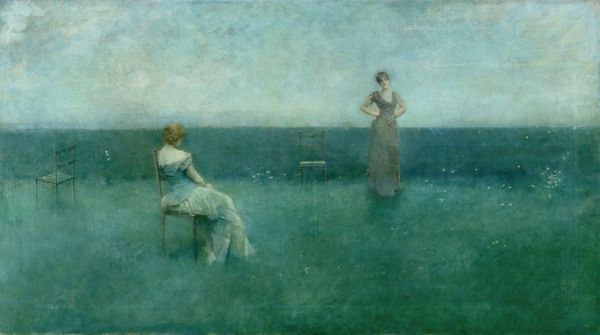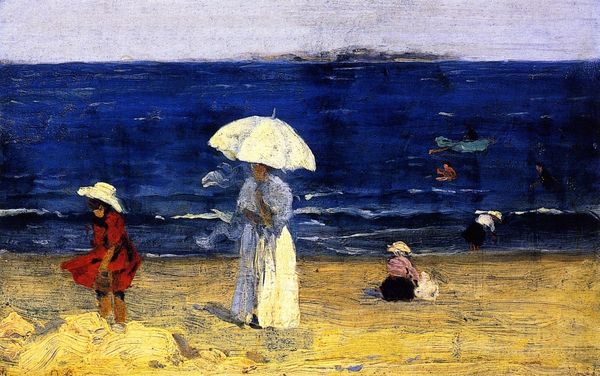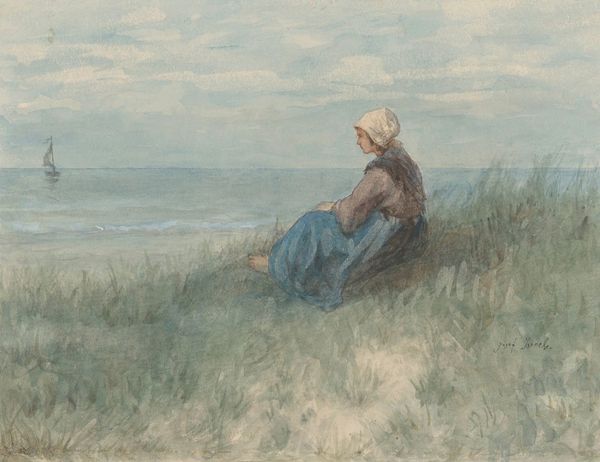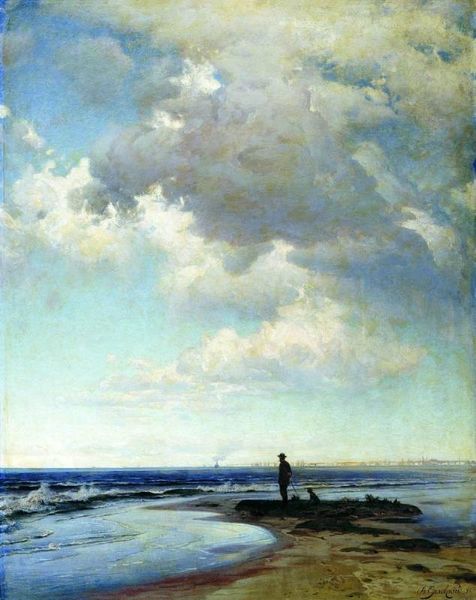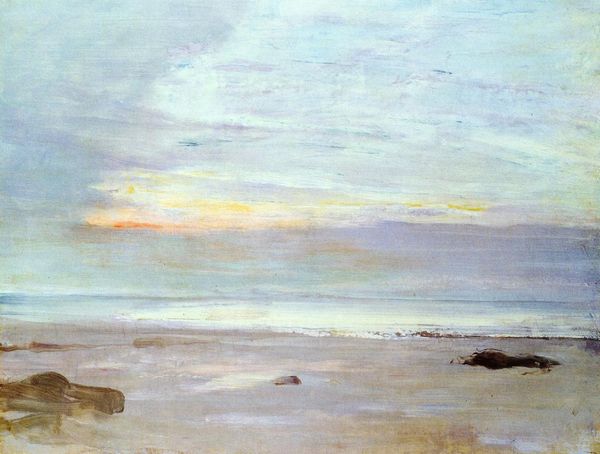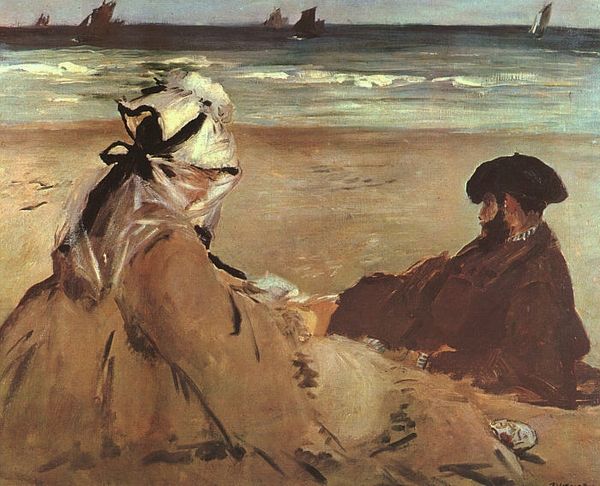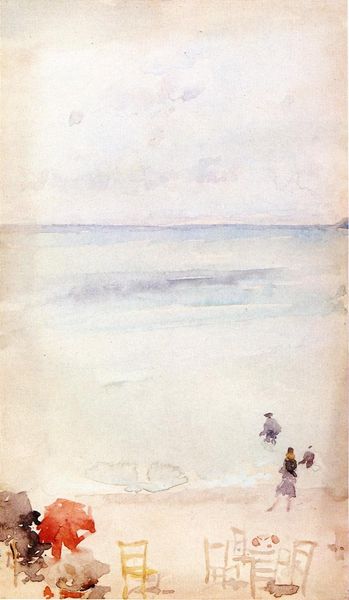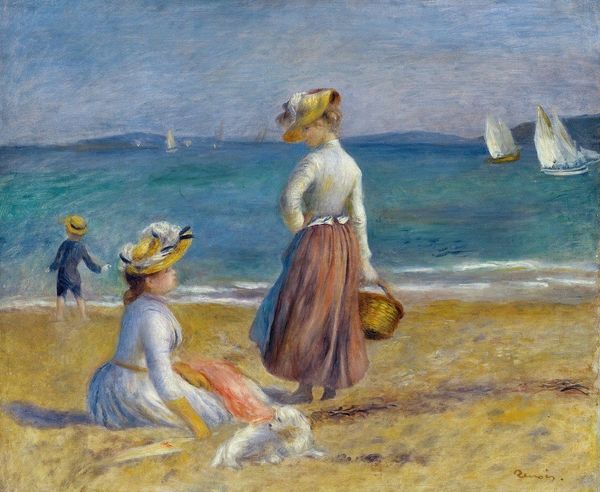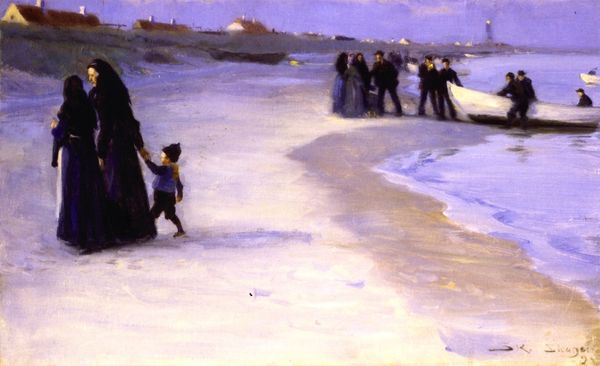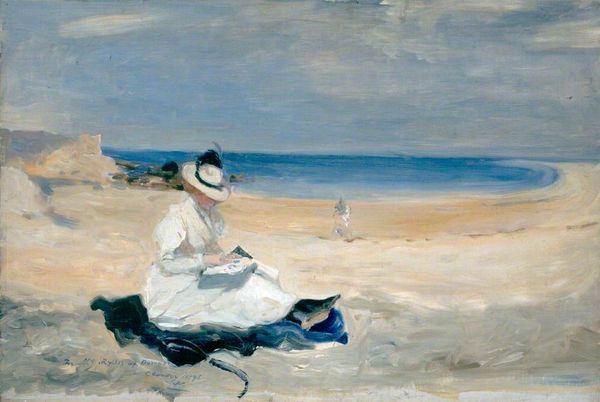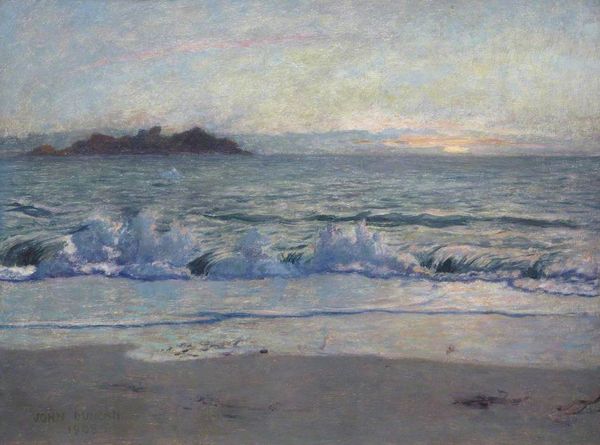
Copyright: Public domain
Editor: This is Thomas Pollock Anshutz’s “Edwardian Woman on the Beach,” created around 1900. It appears to be an outdoor watercolor study. The figure is quite small in comparison to the landscape. It feels melancholy… a little isolated. How do you interpret this work? Curator: I see a nuanced commentary on the social constraints placed upon women during the Edwardian era. While painted "en plein air," suggesting freedom, consider how her dark clothing and covered form contrast with the open, airy beach. Is she truly free? What does the vast expanse of water represent to a woman with limited agency at the time? Editor: I hadn’t thought of her dress as restrictive – more like appropriate for the time. So, her clothing becomes part of the message? Curator: Precisely! Fashion was never just about aesthetics. It dictated mobility and social standing. What does it mean for a woman to be on the beach fully clothed while men are engaging in water sports at the time? Editor: It highlights her separation from the natural world. She’s present, but not really participating. Curator: Exactly. Now consider her gaze. Is she looking out to sea with longing, or is there a sense of resignation? And who is she, really? Anshutz wasn't focused on capturing the individual woman as a unique person but rather on capturing an Edwardian type. Editor: So, it’s less a portrait and more a commentary on women's roles, using this figure as a representation of a whole social group? I see it now. The seemingly simple scene speaks to broader social realities. Curator: And that’s the power of art – it holds a mirror to society, inviting us to question the narratives we inherit. It can allow you to discover and unveil your feelings as a member of society, not just as an individual. Editor: This has changed my perspective completely. Thank you.
Comments
No comments
Be the first to comment and join the conversation on the ultimate creative platform.
